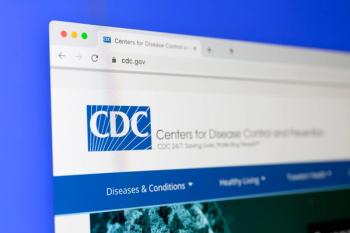
Pharmacy Practice in Focus: Health Systems
- May 2023
- Volume 12
- Issue 3
Interventions for Heart Failure Should Span Care Continuum
Comprehensive in-hospital planning, postdischarge follow-up, ongoing support are key.
Heart failure (HF) is a major public health issue associated with high morbidity and mortality and a common cause of hospitalizations among patients with Medicare coverage.1,2 Despite advancements in medical procedures and treatments, HF management remains challenging for health care providers. More than 6 million adults in the United States older than 20 years have HF, and approximately 800,000 diagnoses are made each year.3 Estimates indicate that the prevalence of HF will rise to more than 8 million adults by 2030, and the total cost of HF will more than double, reaching approximately $69.7 billion.4
In 2011, HF was the most common primary discharge diagnosis among Medicare beneficiaries and the third highest for hospital reimbursements.5 Furthermore, there were 1.4 million hospitalizations, more than 11 million office visits, and $17 billion in total spending attributable to HF alone.6 The complicated and progressive nature of this disease, coupled with multiple comorbidities, often results in negative outcomes, the costliest being hospital readmissions. Approximately 25% of patients admitted because of HF are readmitted within 30 days, and 34% are readmitted within 90 days of discharge.7 Consequently, the Centers for Medicare & Medicaid Services announced a rule that reduced reimbursement by up to 3% to medical institutions with excessive risk-standardized readmission rates for HF within 30 days following hospital discharge.8 Additionally, The Joint Commission’s National Patient Safety Goals recommended that medication reconciliation be performed during all levels of transition of care (TOC) to reduce negative patient outcomes associated with medication discrepancies.9 HF management clinical guidelines and evidence highlight the importance and role of transitional care interventions in preventing HF readmissions.10
A TOC is defined as when a patient transfers from a hospital to a community or home. Transition points are considered vulnerable times that contribute to gaps in quality and safety of care and high health care costs, and they are associated with hospital readmissions.11 HF hospital readmissions, including emergency department visits, are considered preventable. Most patients with HF are often discharged early in the recovery period with inadequate self-care instructions, poor management of the underlying problems, and poor multidisciplinary coordination.12 Recent studies have evaluated pharmacy-led HF TOC and demonstrated decreased HF 30-day readmission rate.13 Furthermore, studies focused on improving care transitions and reducing readmission generally use several common intervention elements across 3 domains, including predischarge, postdischarge, and/or bridging interventions.13
Recently, the American Heart Association (AHA) published a scientific statement on TOC in heart failure. The statement describes transitional care interventions and discusses recommendations to improve patient-centered outcomes.12
Overview of Interventions
Among TOC interventions to prevent hospital readmissions, common themes have emerged. Most interventions should begin immediately after admission to the hospital and continue for varying periods after hospital discharge. Nurses are the most frequently described providers, with roles as care coordinators, coaches for self-care behaviors, and role models. In addition, 8 characteristics of a TOC include educational teaching methods, specifically teach-back, to ensure understanding of content and educational materials; telephone follow-up; early follow-up after discharge; early assessment after hospital admission; medication reconciliation; inclusion of caregivers; home visits; and handoff to posthospital providers.12
Patient Education
Education components include a foundation about HF disease, diet (such as the role of dietary sodium and the importance of limiting fluid intake), signs and symptoms of HF, self-care expectations, and medication education and counseling. At hospital discharge, most programs recommend that patient education be tailored and included in a patient-centered personal health record.
Telephone Follow-Up
Postdischarge follow-up telephone calls are a long-standing clinical practice used to provide education and support, manage symptoms, recognize complications early after hospital discharge, answer patients’ questions, and address concerns about self-care and recovery, particularly when patients are unlikely to initiate calls. After the first few days at home, telephone follow-up in patients with high-risk disease may reduce rehospitalization by helping them improve self-care and recognize changes in their clinical condition.
Early Follow-Up Visit After Discharge
In most TOC programs, follow-up appointments should be scheduled before hospital discharge. Furthermore, the recommendations state that all appointments be written down. Personnel responsible for making follow-up appointments varied from discharge advocates to physicians. Still, it was not specified in most program literature. Additionally, different situations, such as out-of-state or international follow-up appointments, were not discussed.
Early Assessment After Hospital Admission
Most interventions included early assessment of the patient’s needs in the home setting to begin discharge planning. Assessment of patients’ and families’ knowledge and understanding of HF informed providers about baseline understanding of HF and knowledge deficits that could be addressed before discharge. The assessment also helps in planning home care services and identifying safety equipment, such as hospital beds, walking aids, and wheelchair ramps needed after discharge.
Medication reconciliation is defined as a process of comparing a patient’s medication orders with all the medications the individual has been taking to avoid medication errors, such as dosing errors, duplications, interactions, and omissions.14 Medication reconciliation is recommended at admission in most transitional care programs and immediately before discharge in others and is completed by nurses or pharmacists. Although HF medication adherence is a primary goal of reconciliation education, systematic review authors state that reconciliation and training would be more effective withimproved communication between patients and pharmacists and other health care providers.15
Most program interventions stress the importance of identifying important nonmedical individuals (caregivers and family members) who are expected to have caregiver roles post discharge. Early identification increased the likelihood of being included in predischarge educational sessions. In an integrated review of social support in patients with HF, adequate social support was positively associated with patient adherence to self-care maintenance skills and the capability of managing symptoms of worsening conditions through self-care management behaviors.
Home visits are a feature of some TOC interventions. Home visits are often recommended very soon after hospital discharge. Still, the number of home visits varies between and within programs, from 1 or 2 visits to continual visits up to 6 months after discharge.
Handoff communication to outpatient health care providers should occur and include information about diagnostic results, hospital events, medications ordered, procedures performed, and therapies implemented. To facilitate interdisciplinary care, a patient record of the hospitalization is recommended as the official handoff tool.
Optimal transitions can reduce rates of potentially avoidable rehospitalizations, reduce the risk of adverse clinical events from medication and other discrepancies, and promote patient satisfaction with care. Preferably, TOC in HF should span the care continuum. In addition to the implementation of evidence-based interventions, quality improvement strategies are needed to ensurethat transition processes and systems producedesired outcomes.
Conclusion
A range of HF transitional care interventions is being used to improve quality of care and outcomes and ultimately decrease health care costs. Transitional care interventions for HF should span the care continuum, according to the AHA. Specifically, the most important core features of tran-sitional care are comprehensive in-hospital planning, post-discharge follow-up, and ongoing support via home visits or telephone for older patients with chronic, high-risk disease who are hospitalized for care. Transitional care interventions that have successfully reduced hospital readmissions are important components of health care reform.
References
- Wadhera RK, Joynt Maddox KE, Kazi DS, Shen C, Yeh RW. Hospital revisits within 30 days after discharge for medical conditions targeted by the Hospital Readmissions Reduction Program in the United States: national retrospective analysis. BMJ. 2019;366:l4563. doi:10.1136/bmj.l4563
- Parikh KS, Sheng S, Hammill BG, et al. Characteristics of acute heart failure hospitalizations based on presenting severity. Circ Heart Fail. 2019;12(1):e005171. doi:10.1161/CIRCHEARTFAILURE.118.005171
- Benjamin EJ, Muntner P, Alonso A, et al; American Heart Association Council on Epidemiology and Prevention Statistics Committee and Stroke Statistics Subcommittee. Heart disease and stroke statistics-2019 update: a report from the American Heart Association. Circulation. 2019;139(10):e56-e528. doi:10.1161/CIR.0000000000000659
- Heidenreich PA, Albert NM, Allen LA, et al; American Heart Association Advocacy Coordinating Committee; Council on Arteriosclerosis, Thrombosis and Vascular Biology; Council on Cardiovascular Radiology and Intervention; Council on Clinical Cardiology; Council on Epidemiology and Prevention; Stroke Council. Forecasting the impact of heart failure in the United States: a policy statement from the American Heart Association. Circ Heart Fail. 2013;6(3):606-619. doi:10.1161/HHF.0b013e318291329a
- Home health agency (HHA) center. Centers for Medicare & Medicaid Services. 2014. Accessed April 15, 2023. https://www.cms.gov/Center/Provider-Type/Home-Health-Agency-HHA-Center.html
- Joynt KE, Orav EJ, Jha AK. The association between hospital volume and processes, outcomes, and costs of care for congestive heart failure. Ann Intern Med. 2011;154(2):94-102. doi:10.7326/0003-4819-154-2-201101180-00008
- Feltner C, Jones CD, Cené CW, et al. Transitional care interventions to prevent readmissions for persons with heart failure: a systematic review and meta-analysis. Ann Intern Med. 2014;160(11):774-784. doi:10.7326/M14-0083
- Anderson SL, Marrs JC. A review of the role of pharmacist in heart failure transition of care. Adv Ther. 2018;35(3):311-323. doi:10.1007/s12325-018-0671-7
- National patient safety goals effective January 2018. Minnesota Hospital Association. Accessed April 14, 2023. https://www.mnhospitals.org/Portals/0/Documents/patientsafety/Medication_Safety/NPSG_Chapter_HAP_Jan2018.pdf
- Van der Meer P, Gaggin HK, Dec GW. ACC/AHA versus ESC guidelines on heart failure: JACC guideline comparison. J Am Coll Cardiol. 2019;73(21):2756-2768. doi:10.1016/j.jacc.2019.03.478
- Naylor MD, Aiken LH, Kurtzman ET, Olds DM, Hirschman KB. The care span: the importance of transitional care in achieving health reform. Health Aff (Millwood). 2011;30(4):746-754. doi:10.1377/hlthaff.2011.0041
- Albert NM, Barnason S, Deswal A, et al; American Heart Association Complex Cardiovascular Patient and Family Care Committee of the Council on Cardiovascular and Stroke Nursing; Council on Clinical Cardiology; Council on Quality of Care and Outcomes Research. Transitions of care in heart failure: a scientific statement from the American Heart Association. Circ Heart Fail. 2015;8(2):384-409. doi:10.1161/HHF.0000000000000006
- Neu R, Leonard MA, Dehoorne ML, Scalia SJ, Kale-Pradhan PB, Giuliano CA. Impact of pharmacist involvement in heart failure transition of care. Ann Pharmacother. 2020;54(3):239-246. doi:10.1177/1060028019882685
About the Author
Deepali Dixit, PharmD, BCPS, BCCCP, FCCM, is a clinical associate professor of pharmacy practice and administration at Ernest Mario School of Pharmacy at Rutgers, The State University of New Jersey, in Piscataway.ph
Articles in this issue
over 2 years ago
Help Manage Hypertension in Underserved Communitiesover 2 years ago
503B: What Should Pharmacists Know for 2023?over 2 years ago
Employee Retention Begins With Recruitmentover 2 years ago
PhRMA Reveals New Approach to Eliminate Discount Programover 2 years ago
Health Awareness Days, Months Serve as Reminders for PharmacistsNewsletter
Stay informed on drug updates, treatment guidelines, and pharmacy practice trends—subscribe to Pharmacy Times for weekly clinical insights.














































































































































































































